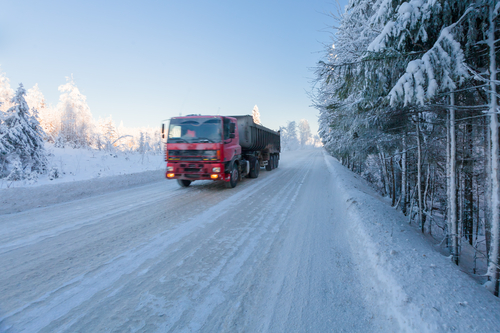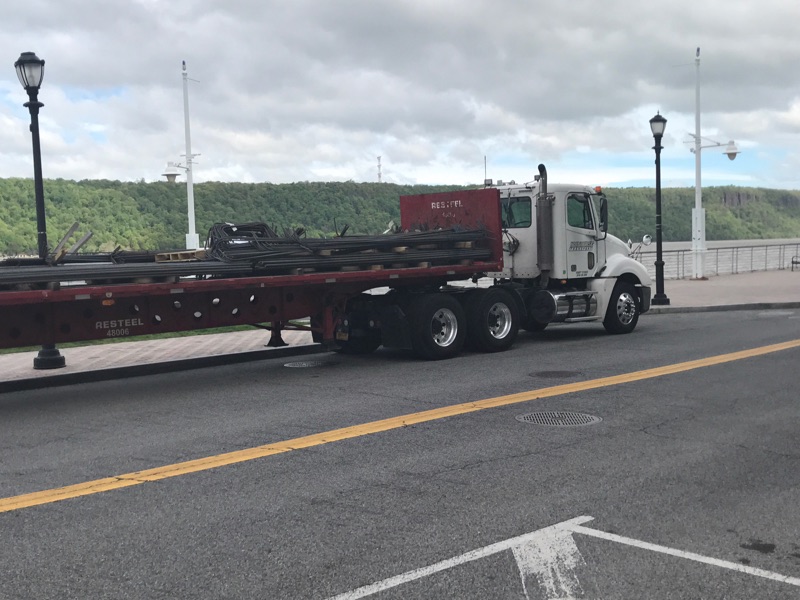
The Jake Brake – Use it Effectively!
At Iron Horse Transport, we place a great emphasis not only on our trucking services but also the safety of our drivers. Operating trucks of a certain size requires a great deal of skill and precision. As we value the merits of efficiency and service, we think it’s important for everyone within the trucking industry to understand the equipment they’re operating. A thorough familiarity with your vehicle is a critical part of smart and safe trucking.
There are some helpful tips any diesel truck driver should know when it comes to the correct use of the Jake Brake. We’ve gathered them below, and they’ll provide a little guidance on using it safely and correctly.
How Does the Jake Brake Work
The compression release engine brake, frequently referred to as the “Jacobs Brake,” is a braking device installed on most diesel engines. When it’s activated, it opens up the exhaust valves in the engine’s cylinders. By opening the valves, the compressed gas trapped within the cylinders then slows the vehicle. The Jake Brake not only slows the truck, but also helps the driver maintain a greater deal of control over the truck’s movement.
It does not rely on power from the vehicle’s service brakes. Instead, it relies on the engine’s power to inhibit the truck’s speed. By using it to reduce speed, it does not wear out the service brakes as frequently. Additionally, it reduces the cost of regular maintenance.
Avoid Using it on Slippery Roads
Whenever possible, try to avoid employing the Jake Brake in poor weather. This is because it is not designed for ideal use on icy, slippery roads.
If you’re forced to use it in winter driving conditions, make sure the tractor-trailer unit is aligned directly behind you. If the truck is not properly aligned, it could lead to a big problem. The truck could wind up jackknifing and sliding out of the driver’s control, and possibly cause a severe accident.
“Jackknifing” is the term used to describe a truck’s trailer swinging out of its control, forming an L or V shape. On most roads, the trailer will swing out across multiple lanes, endangering the other cars on the road.
We advise drivers to be careful and selective when using this breaking system. Ensure that the road is dry, and if not, be sure to make sure your truck and trailer unit is not unstable.

Some Miscellaneous Info:
When it comes to using the Jake Brake, there are a few additional measures to be taken to ensure safe and effective use. Always perform route surveys whenever possible to become familiar with the roads as much as possible. Make sure the engine has plenty of oil, and also that the engine is at a sufficient operating temperature. Before lengthy road trips, test the Jake Brake a few times to be sure it’s working properly.
It is recommended to operate the Jake Brake in the shifting range, about 1,100-1,400 RPMs. The brake will work in a higher range; however, the motor might decline at a faster rate if it’s in a higher range too frequently.
Different engines utilize different positions of strength for the Jake Brake, and the driver can adjust the position according to conditions. On a Jake Brake with three positions, 1 and 2 are considered the best to use in difficult road conditions. The third position, position 3, is the strongest and is used most often.
Using the Jake Brake while shifting the truck’s gears is not recommended, as the engine can very easily stall out. And if the truck is not traveling at a stable and controlled speed, do not use the Jake Brake to slow the truck.
In some areas, you’ll find “No Jake Brake” or “No Engine Brake” signs, as it is often extremely loud. These signs forbidding the use of the Jake Brake are usually posted in areas where residents living near busy roads or highways have complained about the noise.
Conclusion
Ultimately, using the Jake Brake is a matter of preference. Many truck drivers consider it an essential tool to drive safely, and some prefer to rely solely on their service brakes. Regardless of preference, it’s best for all drivers to have a thorough understanding of the equipment they’re operating. Knowledge of the Jake Brake can ultimately help drivers keep themselves and fellow drivers safe.




